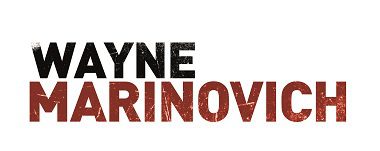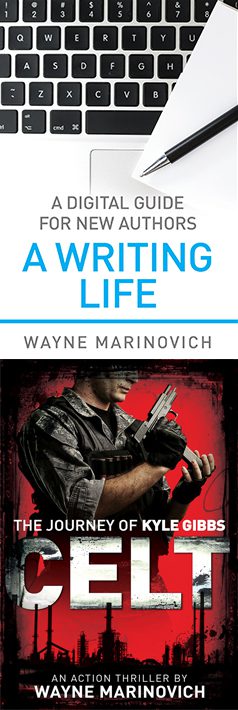
Self-publishing
Being an IT analyst for many years meant I was always going to over research the whole subject of traditional vs self-publishing. The more I delved into it, the more I leant towards the latter. The first thing I realised as I read articles and books about producing a novel was that writing is a creative art form. Publishing, on the other hand, was a tough business. Two vastly different concepts that require you to wear two very different hats.
Traditional publishing is an industry guarded by editorial gatekeepers who choose works based on a sales model that applies to them at a point in time (books that will sell). And, it doesn’t always ensure that only quality publications make it through to the shelves.
Self-Publishing, on the other hand, is a tough and solitary road to walk, requiring a strong resolve and a thick skin. It involves both personal cash and emotional investment. No matter how hard you work, you’re not guaranteed success.
Technology changed it all
Technology changed everything in the reading world. When I arrived in London in 1998, everyone read books and newspapers on the underground. I always expected to see a librarian pushing a trolley down the centre of the aisle, handing out novels. Fast forward to 2016, and most travellers are reading from media tablets or playing games on their smartphones. I still get a warm feeling every time I see someone reading a novel.
Publishing is no longer the privilege, or right, of a select group of people anymore. Just about anyone can do it now if they have the discipline and application. It can be broken down into three areas.
- Those who go down the traditional publishing route
- There are those who self-publish print-on-demand books plus eBooks
- And, those who self-publish eBooks only.
I started out publishing eBooks only, but have started offering print-on-demand paperback too. The main reason for doing this is because of the independent nature of it all. I was a freelance contractor for most of my IT days and enjoyed working for myself. I wanted to make a career out of doing what I loved, so I had to choose the model which I believed would allow me to live and write. (UPDATE: There are many successful authors who are now hybrid publishing where some books are traditionally published while they retain some rights to digitally sell other works).
Here are some other reasons why I decided to self-publish in the end.
Ease of Process
You can write without deadlines or pressure. Upload your manuscript when you choose. Determine your selling price and do your own marketing.
Lower costs for self-publishing
Printed books need to be edited, designed, proofed, produced, stored, distributed, marketed and pulped if they failed to sell after a period. Other people in the supply chain need to do this which means these companies have to recover their salaries and cost somewhere. They all have to be paid before you get your royalty.
Greater control of the decision-making process
You’ll need a professional team to help you but the decision of what, when and how is solely in your hands.
Faster time to market
Whether you upload directly to book sites or use an aggregator (online distributor like Smashwords), self-publishing is a far quicker process. From the first draft to the online bookstore you can do it faster than the traditional publishing route.
Fast growing eBook market
It has been rising year on year, and as technology becomes cheaper and more accessible, the eBook market will continue to grow.
Higher royalties, a higher percentage for the author
In the end, to be a full-time author you can sell fewer copies to make a livable salary. You control the price.
Printed books have a shelf life
eBooks don’t go out of print because they’re always available online, globally. Sales can be made while you sleep and the high street bookstores are closed.
Slow burners
eBooks won’t be pulped if they are slow burners. New authors don’t stand much of a chance with the small window of opportunity that the traditionally published route offers. Unless you are already a seasoned published author or are lucky enough to have a breakout, you’ll struggle. If you don’t make an impact on-shelf in the first two to three weeks, your book is gone.
It’s not all a bed of roses. Here are some of the downsides of the self-publishing route.
Costs will still exist if you take it seriously
Getting a professional cover designed will cost you money. Using an external editor or getting your manuscript formatted into the different eBook formats will have to be paid for by yourself. But you can shop around and have some say in the choice of supplier and price.
If it goes wrong it’s your fault
Yes, you may get help from industry professionals to polish your cover and manuscript All the decisions you make, are yours alone and therefore all mistakes are your responsibility. You are to blame for it all if it goes wrong.
No print copy
Friends, family and fans will still want a print copy of the book – especially if they don’t have an e-reader. True book lovers (lovers of the feel and smell of books) will miss out if you only publish eBooks, but that’s something you have to weigh up.
It’s getting cheaper to get small print runs nowadays. Paperbacks are also offered through Amazon KDP, but at the point of writing, you won’t make much money on them.
You wear all the hats in the process
Write, edit, rework, format, promote and market. This can be tough if you don’t have the experience or aren’t an outgoing, driven person.
Technical challenges
Formatting will be daunting to some who are not comfortable with the IT world. It’ll take time to teach yourself, or you can just pay for someone else to do it. I use Ebook Launch to format mine because they guarantee the files can be uploaded onto Smashwords.
Rush to publish
There are enough substandard and rushed publications out there. Don’t’ rush your work. This will be a temptation for when you are getting near the end of your first novel. The reader will punish you for substandard work. If you think your manuscript is ready, and you’ve got feedback from an editor, do one more rework.
Your Author Platform
You need to develop your platform to sell too, whether it is printing a couple of hundred books and then making door-to-door sales to local bookshops or ploughing through social media and blogs. Build your own platform. Using Facebook or Google+ means using someone else’s platform. Start with your Author website and drive all traffic there.
Stigma
Self-publishing is not seen to have the gravitas of being traditionally published through a big publishing company and many book snobs still look down their noses at it. This will change over time, though.
What are your feelings about self-publishing?
Please click below if you want to receive my newsletter with tips, book release updates and a free sign-up gift.










